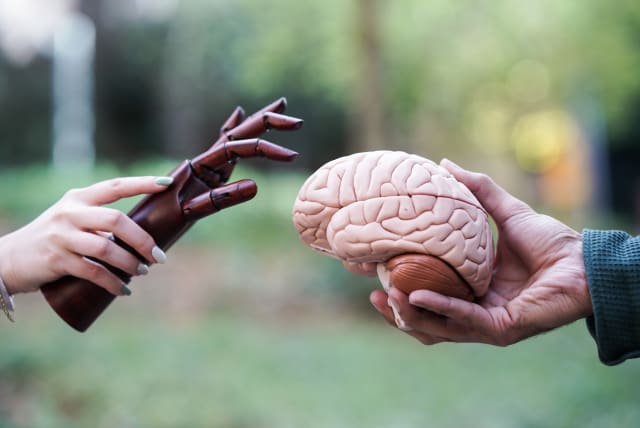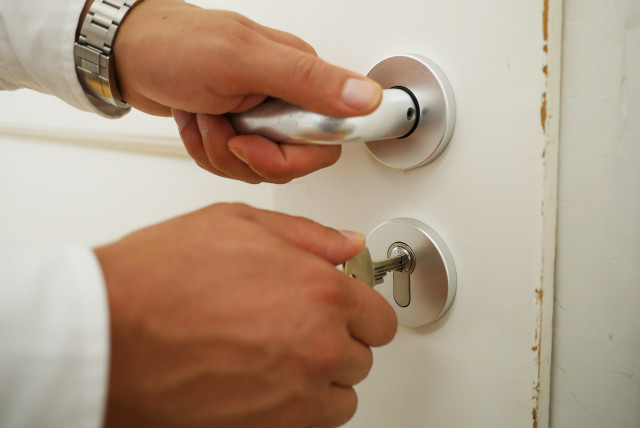Israeli biomedical research introduces new brain damage rehab techniques - study

A study conducted at the Technion-Israel Institute of Technology in Haifa sheds light on the subject of brain damage and finger dexterity.
How agile are your fingers? Finger dexterity is a highly developed human skill that is vital for a huge range of activities including eating with a knife and fork, tying shoelaces, typing and playing musical instruments. This ability is based not only on the unique anatomy of the human hand, but also on complex brain capabilities.
The brain controls finger dexterity via intricate mechanisms that have long challenged scientists in various fields. Now, a study conducted at the Technion-Israel Institute of Technology in Haifa sheds light on this subject and, according to the researchers, is likely to lead to the development of innovative rehabilitation strategies that would be adaptable to the needs of individual patients.
The research was led by Prof. Firas Mawase, head of the sensorimotor neuroscience and neurorehabilitation laboratory in the Technion’s Faculty of Biomedical Engineering, and graduate student Gili Kamara. Their results have just been published in the journal Cell Reports under the title “Generalization indicates asymmetric and interactive control networks for multi-finger dexterous movements.”
Research methods and product development
In the course of their research, Mawase and Kamara developed a unique ergonomic device that enables in-depth testing of the strength of a patient’s fingertips. They used it to analyze the ability to learn and generalize finger motor skills. The study’s focus was on two main types of motion – flexion (closing the fingers inward) and extension (opening the fingers outward) – two movements that are necessary for most of the fingers’ actions.
Stroke survivors with cortical lesion, who despite regaining good flexion-based grasp, have very weak finger- and wrist-extensors that seriously prevent the hand from opening.
Kamara recruited three cohorts of young, healthy subjects – one group that underwent only finger flexion training, another that was trained only in finger extension and a control group that did not undergo any training. She checked their dexterity in the direction that was learned as well as generalization in the other direction.
The results revealed that finger extension training improved abilities in the other direction (flexion), but the opposite was not true. Finger flexion training, however, was not generalized in the other direction (extension). These findings indicate that the control circuits responsible for finger dexterity are interactive and partially transmitted but are not symmetric in the two directions.
The results of this study, they said, could improve the techniques used for rehabilitating patients suffering from brain damage, including conditions such as hemiparesis – a condition that harms mobility on one side of the body and leads to difficulty walking and grasping, loss of balance and more problems.
Mawase completed his doctorate in the biomedical engineering department at Ben-Gurion University of the Negev (BGU) in Beersheba and a post-doctoral fellowship in the department of physical medicine & rehabilitation and neuroscience at Johns Hopkins University School of Medicine in Baltimore. In his research lab, he develops behavioral experiments on both healthy subjects and patients suffering from brain damage, using engineering and computational tools and functional imaging of the brain to determine the neural base that controls motor skills in humans.
Kamara came on aliyah from the US 13 years ago. She completed bachelor’s and master’s degrees in the Technion Faculty of Biomedical Engineering and worked in the industry for two years between degrees.
The research was supported by the Israel Science Foundation (ISF) and the German-Israeli Foundation for Scientific Research and Development (GIF).
Jerusalem Post Store
`; document.getElementById("linkPremium").innerHTML = cont; var divWithLink = document.getElementById("premium-link"); if (divWithLink !== null && divWithLink !== 'undefined') { divWithLink.style.border = "solid 1px #cb0f3e"; divWithLink.style.textAlign = "center"; divWithLink.style.marginBottom = "15px"; divWithLink.style.marginTop = "15px"; divWithLink.style.width = "100%"; divWithLink.style.backgroundColor = "#122952"; divWithLink.style.color = "#ffffff"; divWithLink.style.lineHeight = "1.5"; } } (function (v, i) { });

